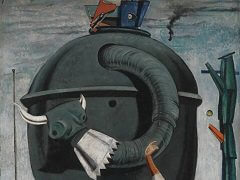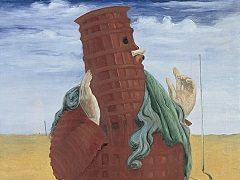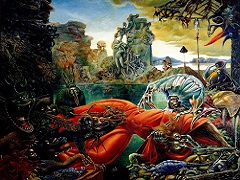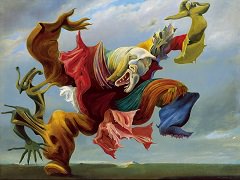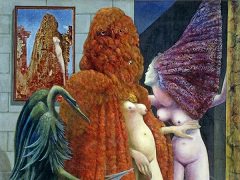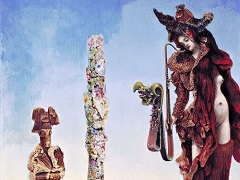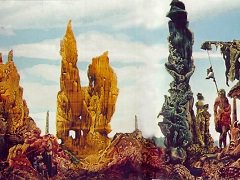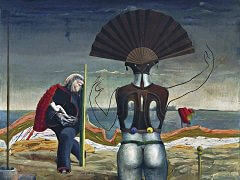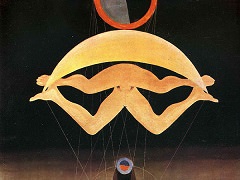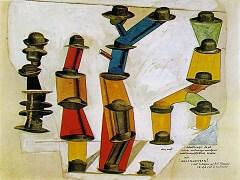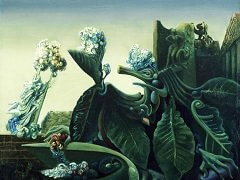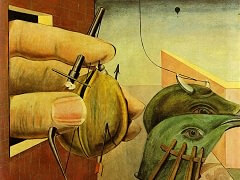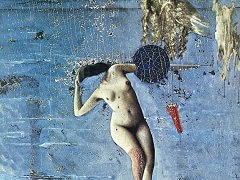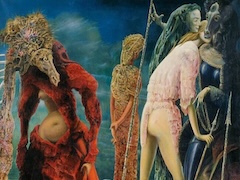Pietà or Revolution by Night, 1923 - by Max Ernst
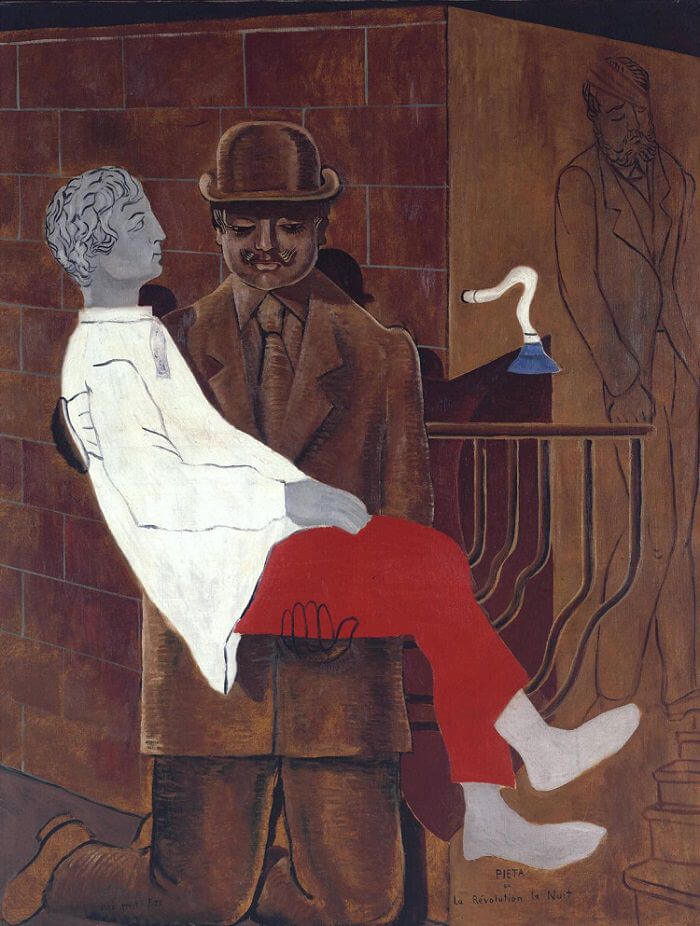
In 1924 the poet Andre Breton published the first Manifesto of Surrealism. The primary aim of this literary and artistic movement was, he explained: 'to resolve the previously contradictory conditions of dream and reality into an absolute reality, a super-reality.'
Inspired by the psychoanalyst theory of the unconscious by Sigmund Freud, Surrealism used irrational images to portray the working of the human mind. Max Ernst's Pietà or Revolution by Night is typical. The painting replaces the traditional scene of Mary clasping the body of Christ with an image of the artist himself, held by his father. The painting is interpreted as symbolic of the turbulent relationship between the artist and his father, as an amateur painter and staunch Catholic. In the painting, Ernst replaces the classic image of the Virgin Mary holding the crucified body of Jesus (Pietà) with his father as Mary and the artist himself as Jesus. The expressions on both faces are blank as though in a state of sleepwalking. In the background drawn on a wall is a man with a bandaged head ascending a flight of stairs. A profile on the work in the British newspaper The Guardian indicates the figure could represent either Sigmund Freud or the French poet Guillaume Apollinaire, who suffered a head wound during World War I.
Other Surrealists included the poets Paul Eluard and Louis Aragon, and the artists Rene Magritte, Salvador Dali and Joan Miro. Purges and defections meant that by 1939 the strength of the group had dissipated. However, it was not formally disbanded until 1968.

